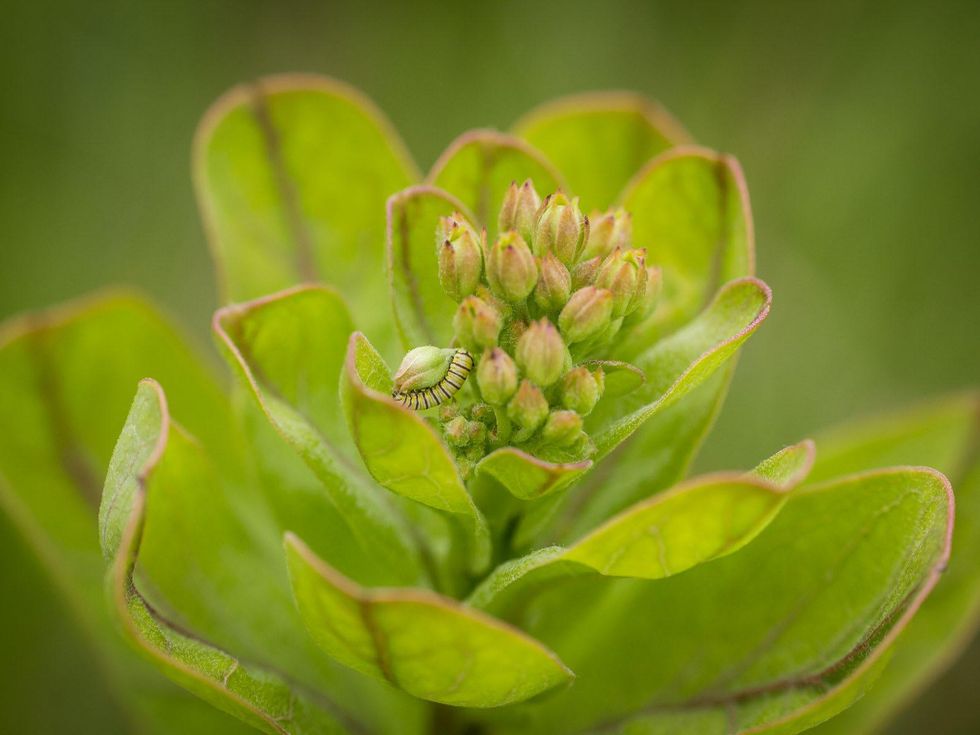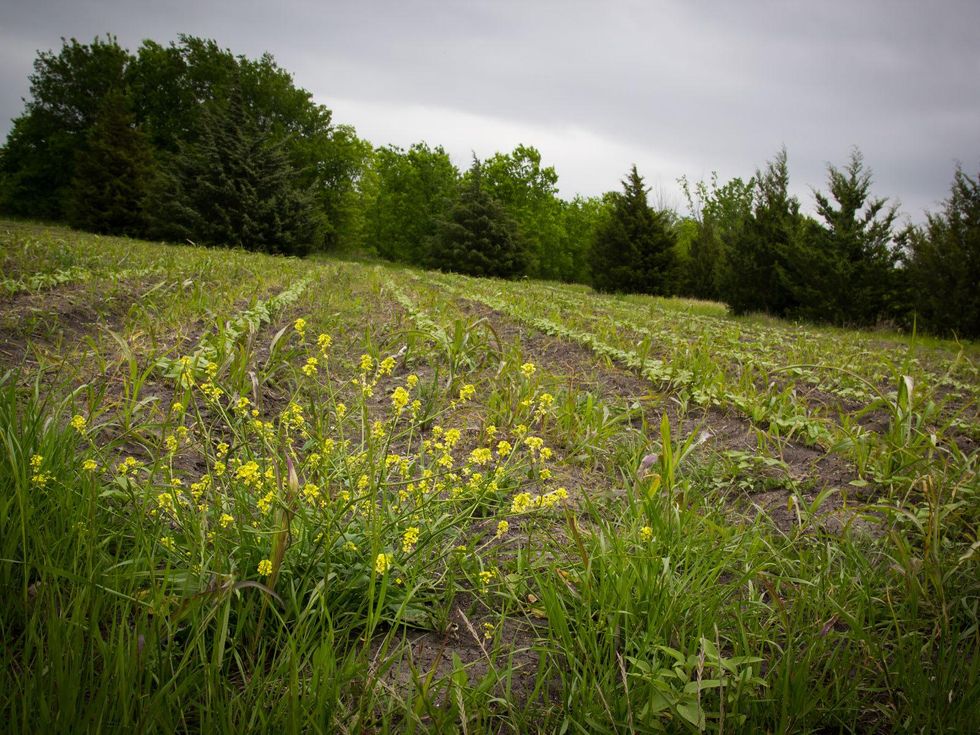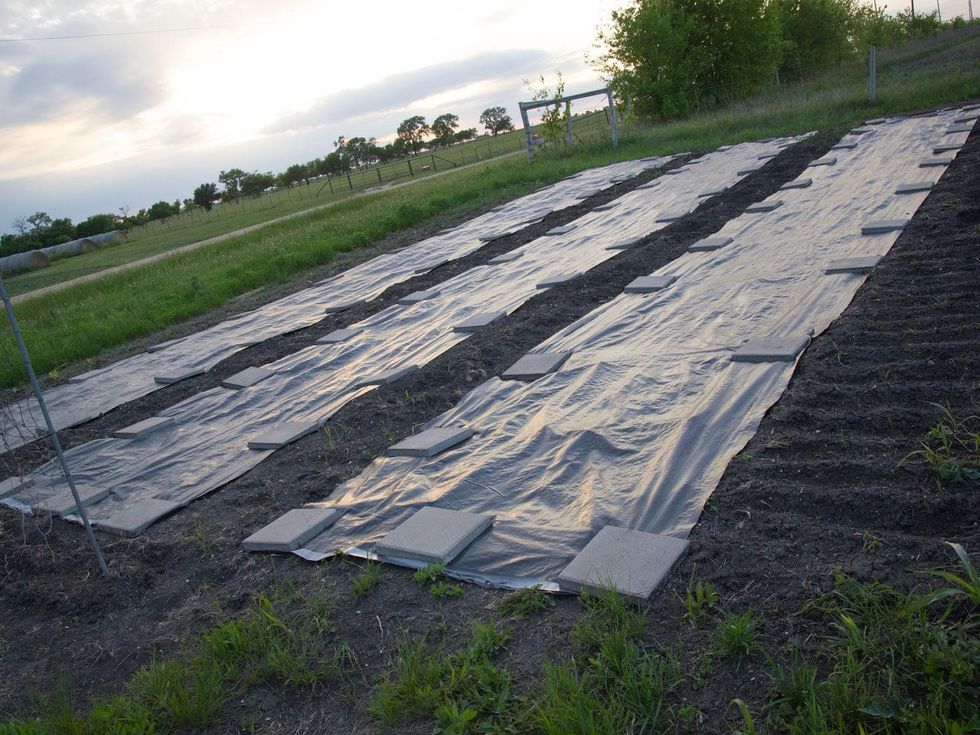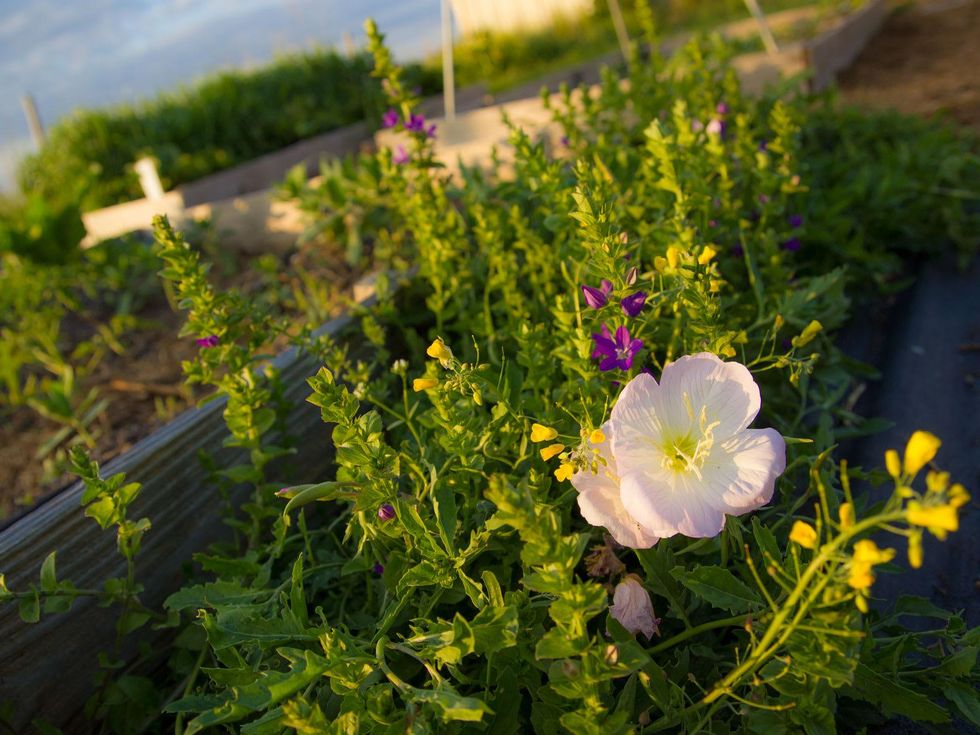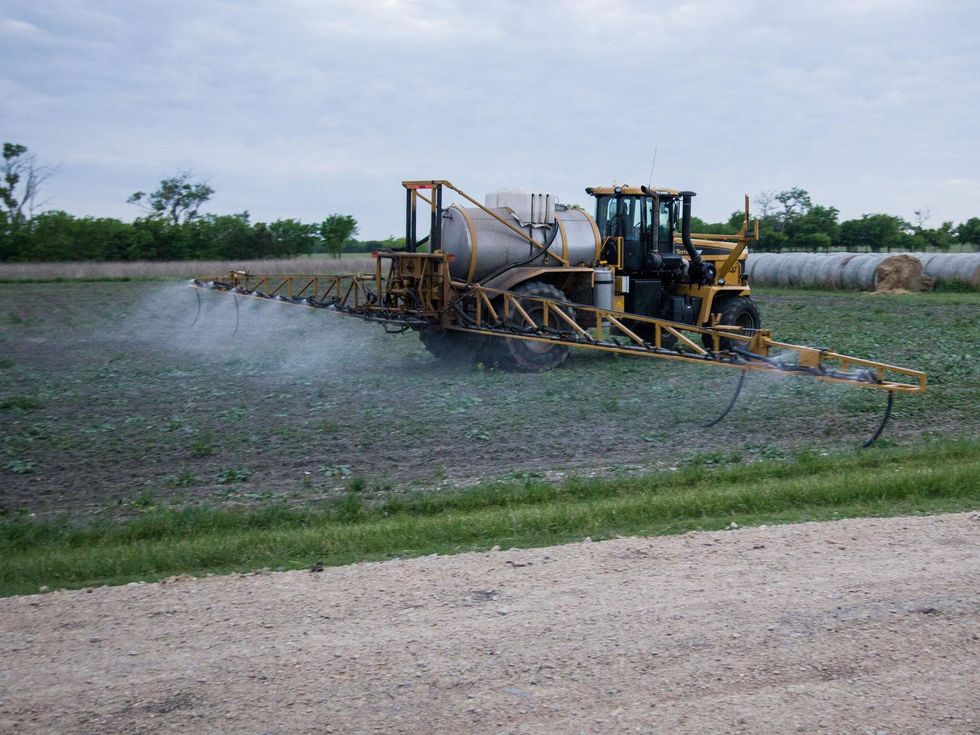The Farmer Diaries
Texas organic farmer battles mightier foe than weeds in his own backyard
In the early 1900s, a local rancher wrote a letter to the editor of the Waxahachie Daily Light, wherein he called an Ellis County agricultural agent a "fool" whose opinions were "hogwash." Apparently, the agent had questioned the rancher's practice of planting a Mediterranean grass called johnsongrass.
The rancher was using johnsongrass as a cheap forage crop for his livestock and didn't take kindly to the agent's warning. He was going to plant it, and no one could tell him otherwise.
Now, two centuries after it was introduced to America, johnsongrass is one of the top 10 worst weeds in the country. Around Dallas, it grows anywhere a lawnmower hasn't been in a while.
Johnsongrass is one of the top 10 worst weeds in the country. Wherever it's left to grow, soon nothing else will.
It’s easy to spot: It grows up to 5 feet tall, with long, sharp, blade-like leaves projecting up and outward from a thick stalk. At the top, airy heads of reddish-brown seeds appear in summer; it resembles wheat. Wherever it's left to grow, soon nothing else will.
Of the 45 acres available to me to grow my own fruits and vegetables and opt out of the unsustainable practices of industrialized agriculture, at least half is occupied by johnsongrass. So, from now until the first frost in November, I will spend most of my days trying to keep this weed under control.
My raised beds are full of it. My area for peas, beans and onions looks more like a field of johnsongrass than crops.
Weeding out the good from the bad
Johnsongrass is the most persistent of weeds, but there are other weeds crowding out my vegetables too. For the organic grower, weed control boils down to manual labor: hoeing, pulling, tilling, mowing. I don't enjoy any of these activities, so wherever I can, I lay down landscaping fabric that blocks out sunlight and creates a weed barrier.
The barrier is like a 6-foot-wide carpet that keeps the pathways between my beds weed-free. This year, I'm even experimenting and placing it between mounds of cantaloupe. It's a lot of fabric, but it can be used year after year, and the expense gets spread out over time.
Lately, I've discovered bastard cabbage growing in the field. Though not as troublesome as johnsongrass, it does threaten to overtake the bluebonnets, Indian blanket and prairie larkspur that we allow to grow in the ditch banks and in designated wildflower fields. Bastard cabbage's introduction from Europe to Texas roadways and pastures is suspected to have come by way of contaminated grass seed mixes. I keep an eye out for it and hoe it down before it spreads out of control.
There are a few weeds, though, that I’m not touching. At the base of the raised beds, I’m allowing primrose, cloth-of-gold and Venus' looking-glass to grow where it will. Butterflies and bees love these flowers. In the beds, milkweed gets a pass because it's essential for the development of monarch butterflies.
Weedmaster is a herbicide left over from the days of Agent Orange. There it was, being sprayed into the air I breathe and onto the plants I’m growing.
As a matter of fact, I've begun to experiment with propagating milkweed, to help counter its widespread eradication by farmers who spray weed killer by the tanker full. Industrial ag's practice of total weed elimination has been implicated in the recent decimation of monarch butterflies who are no longer able to find milkweed along their migration routes through North America.
Where milkweed once flourished and the monarchs laid their eggs, only fields of genetically engineered crops grow now, doused in chemicals.
A little bit of Weedmaster
In late April, as I tended my garden plot during an especially peaceful sunset, the quiet was broken by the arrival of a huge yellow-and-black spray truck that stopped in front of my garden. The driver turned into the field across the road and spread out the truck's retractable spraying arms. Seconds later, he let loose a huge gaseous cloud of chemicals no further from me than a pitcher is from a batter at home plate.
It was an employee of a nearby ranch, and he was spraying a field that's used to grow hay. I had my camera and started snapping a few photos as evidence; if my garden plants curled up and died the next day, I would need photos for court. Soon, a red truck pulled up to me; it was the rancher associated with the spraying.
"You worried about the sprays?" he asked.
"Not too worried – I’m sure you're just fertilizing," I said, with enough question in my voice to provoke a response.
"Yeah, fertilizer, and a little bit of Weedmaster," he offered. "But it won’t hurt anything."
On the contrary, Weedmaster is a herbicide also referred to as 2,4-D. It's a leftover from the days of Agent Orange and is linked to cancer, cell damage, hormonal interference and reproductive problems. There it was, being sprayed into the air I breathe and potentially drifting onto the plants I’m growing.
I remained congenial with the rancher during our brief interaction, suppressing my urge to protest the dangers to which he was subjecting me. I wanted to let him know how I felt about him placing my crops in jeopardy and the economic loss it could cause. I wanted to tell him that he was engaging in the same activity that's destroying butterfly populations and poisoning our land and groundwater. But I didn't. I've had enough experience to know that ranchers don't listen to environmentalist fools and their alarmist hogwash.
